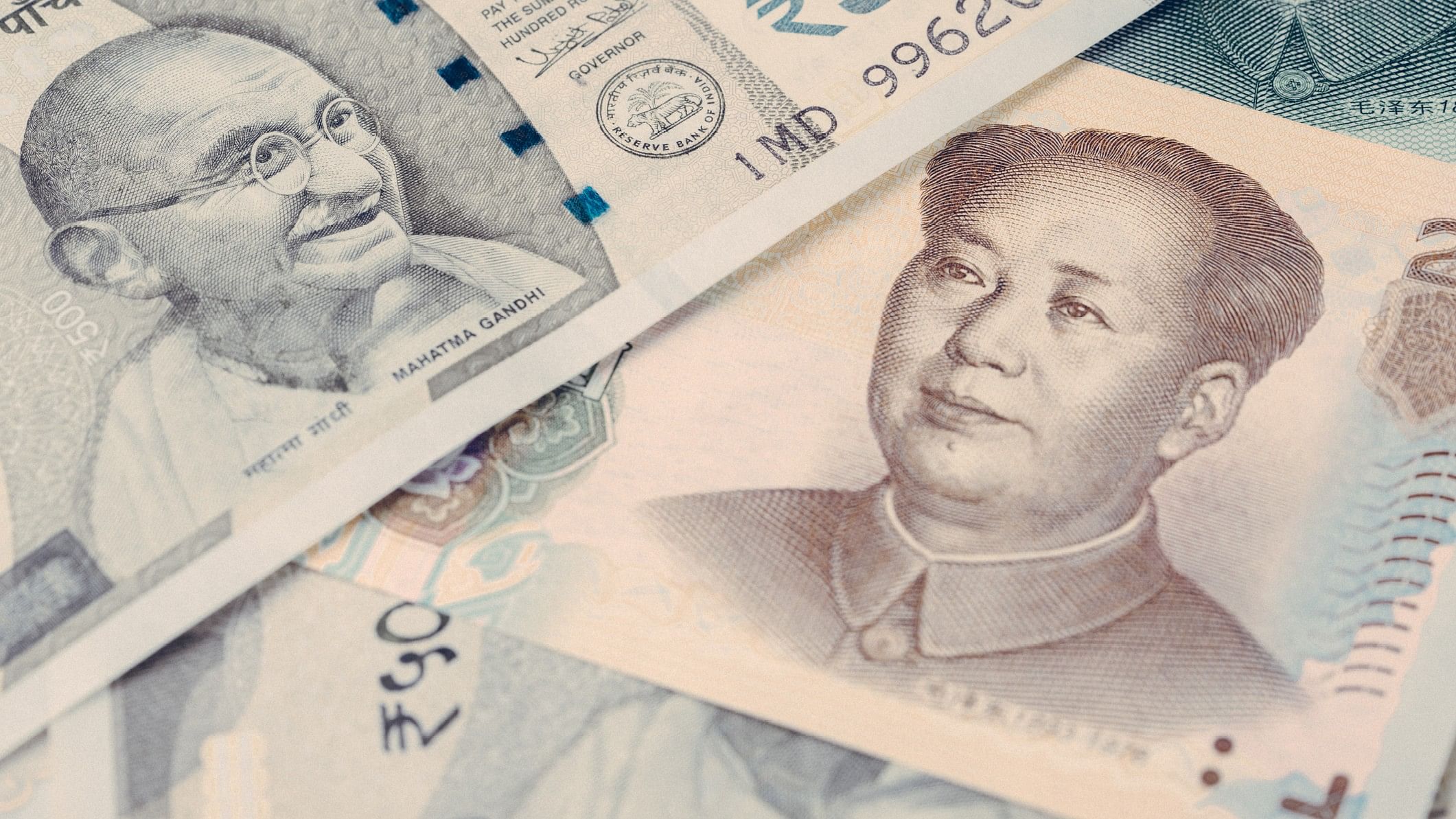
Representative image of Rupee note and Yuan.
Credit: iStock Photo
Crude oil price fluctuations have been a significant cause of concern for inflation in India. The recent agreement to import oil from Russia at more affordable rates has provided some relief in this aspect. Furthermore, the decision to pay for crude oil imports in Indian rupees through Vostro accounts was a strategic move aimed at internationalising the Indian rupee. However, recent reports indicate a concerning development, with Indian refiners now paying Russia in Chinese yuan and UAE dirhams for oil imports, signalling potential challenges ahead.
A previous article in these columns highlighted that Russia has amassed a substantial amount of rupees, which it is struggling to use effectively. The primary reason behind this problem is the relatively small volume of imports from India to Russia. India’s total exports to Russia showed a decline, decreasing from Rs 27.82 billion in April 2023 to Rs 24.78 billion in May 2023. However, in contrast, India’s imports from Russia surged, from Rs 408.35 billion in April to Rs 496.25 billion in May 2023.
This situation presents a stark contrast to India’s aspirations to replace the dollar with the Indian rupee in international trade. It is a fact that it would take years for the rupee to replace the dollar, or, to be fair, to catch up with the dollar’s prominence. Understanding and acknowledging our current trade relations and the associated challenges would help us grasp reality. While we celebrated the initiative to engage in trade with 18 countries using the Indian rupee, it is crucial to recognise that more than 100 countries are already engaging in trade transactions with China using the Chinese yuan. This widespread adoption of the yuan in international trade transactions provides added convenience to Russia, as it allows them to engage in trade with a larger number of countries seamlessly.
Furthermore, the trade deficit between China and Russia stands at a relatively modest $38 billion, in contrast to India’s larger trade deficit with Russia. China’s competitive pricing and advantageous location provide them with a distinct advantage in their trade relations with Russia. For instance, in 2022, India’s exports to Russia amounted to nearly $3 billion, whereas China’s exports to Russia were $75 billion in the same year. The competitive prices of Chinese products pose a stiff challenge for India in the international market.
Choosing to pay in Chinese yuan poses potential implications for the Indian rupee and our foreign exchange reserves. Accumulating yuan reserves could introduce volatility to the Indian rupee or potentially necessitate using foreign currency reserves to purchase yuan. This situation would clearly indicate Russia’s preference for the yuan over the rupee as a replacement for the dollar, which could be detrimental to the already struggling rupee.
Nevertheless, there are potential benefits for Indian refiners if the conversion rate set by Russia proves favourable. By leveraging the differences in exchange rates, they could sell refined oil at a profitable margin to the West.
Engaging in bilateral trade agreements for rupee settlements with our top trading partners is crucial. However, it is vital to demonstrate the necessity of such agreements to them. While the recent Rupee-Dirham trade agreement with the UAE offers benefits, the significant $5 billion trade deficit remains a concern.
Like Russia, the UAE will explore options to effectively use its rupee reserves, and failure to do so could render the initiative futile. Talks are in progress to establish a similar arrangement with Indonesia, our second-largest trading partner in the ASEAN region. However, the situation here is not different, as we have a considerable trade deficit with Indonesia too.
In the long term, adopting a comprehensive approach becomes imperative to enhance export competitiveness, encourage import substitution, and diversify our imports. Reducing the trade deficit will not only strengthen our currency but also boost investor confidence in our country.
While reducing trade deficits seems like a distant goal, the immediate short-term solution lies in demonstrating the mutual benefits of entering into trade agreements in local currency.
(The writer is assistant professor at TAPMI, Manipal Academy of Higher Education)